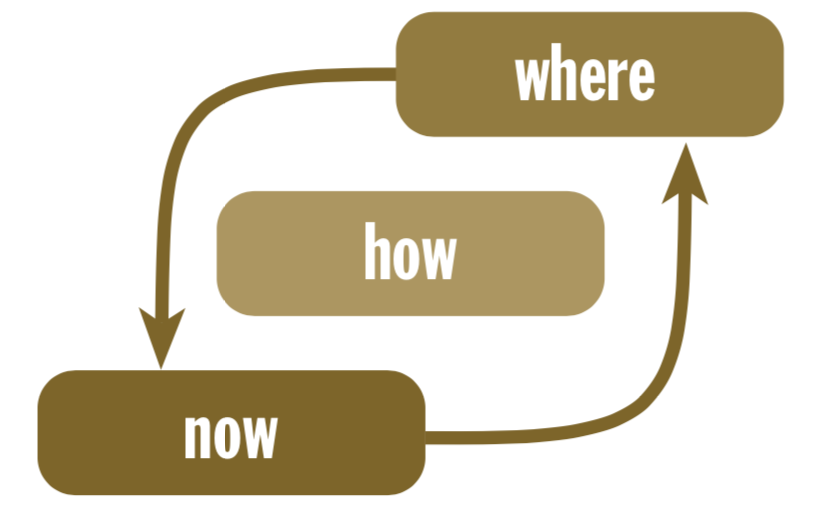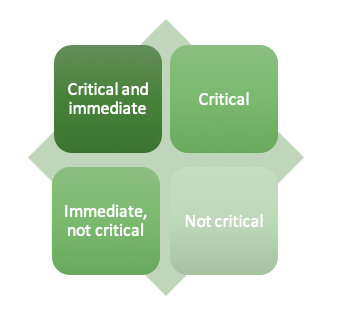Nearly all forms of extension involve either aiming to achieve, or the setting of goals. The methods discussed in this post, will help ensure your setting or reviewing of goals is well considered and will best meet the needs of the stakeholders involved.
A key benefit of setting goals, is to specify exactly what it is that is hoped to be achieved. Once a goal is clear, then the resources and any skills required become easier to identify and measurable outcomes can be established. Importantly, priorities can also be set.
“Goal – the object of a person’s or organisation’s ambition or effort; an aim or desired result.” – the Oxford English Dictionary
Vision and Mission
“Begin with the end in mind” – Steven Covey
Goals are what are needed to be achieved, in order to to achieve an overall vision. In order to set meaningful goals, it is best to be clear on what the overall vision and mission is.
A “vision” gives a clear picture of what things are aimed to be like in the future, based on aspirations and the attainment of goals. It gives a clear focus on what the overall purpose is. For example for AgriFutures Australia, their vision is “To grow the long-term prosperity of Australian rural industries”.
A vision needs to be simply stated, actionable, forward-thinking and specific.
As compared to a mission statement, which is used by organisations and in business to state what they do, to define what they are in the business of, the related goals and their overall approach to achieving their vision and goals.
For example, the mission stated by AgriFutures Australia is: “AgriFutures’ mission is to collaborate with its partners to create lasting value for its stakeholders, investing in research, innovation and learning initiatives that enhance the prosperity, profitability and sustainability of the agricultural, fisheries and forestry sectors.”
A mission statement states what is being done, by whom and to what end.
S.M.A.R.T. Goals
The S.M.A.R.T. process is an excellent way to set and write meaningful and achievable goals. As you set a goal you review it against the following criteria:
Specific – When writing a goal, be very specific about what it is you are trying to achieve.
Measurable – Are there indicators that can be measured to demonstrate the attainment of the goal? Include those in your written goal.
Actionable – Are there actions that can realistically be applied, that will result in the goal being achieved. Include the key actions in your written goal.
Realistic – Does the goal make sense against the overall vision?
Time constrained – Can the goal be achieved within a reasonable timeframe and in doing so contribute to achieving the overall vision within the expected time? Document the timeframe in your written goal.
Where, Now, How

This is a simple planning process for helping set goals. You firstly review your “vision” where you would like to be. This is the “where” part of the planning process.
You then look at the “now”, you describe your current situation against your vision, where you would like to go.
Finally you look at the “how”. This is how you are going to get from the “now”, your current situation, to where you want to get to, the “where”, your vision. In doing so, you set the goals and the resources and strategies for achieving them.
Strategic, Tactical or Operational
When setting or reviewing goals, it is useful to context them as either strategic, tactical or operational.

Strategic goals – These are the big pictures goals that effect the overall strategic direction. They include the ultimate goal.
Tactical goals – These relate to the steps that need to be achieved in order to reach the ultimate goals(s).
Operational goals – These relate to the more day to day activities that need to be achieved in order to achieve tactical or strategic goals.
Turning Goals into Actions
Achieving goals takes action and prioritising where effort is to be placed.
If there are too many goals and associated tasks to do; then people are at risk of becoming overwhelmed, stressed, tired and will potentially lose motivation.
To avoid this problem, it is critical that goals are meaningful, sequenced appropriately and in achieving them they are going to make a difference within a realistic timeframe. If not, they need to be evaluated, revised or deleted from the plan.
Developing an action plan will result in clearly defined tasks, showing who is to be involved, what is required and when they are to be completed. It will also show everything in context and it can be reviewed as to whether it is realistically achievable overall, with the resources at its disposal.
An action plan is a living document and it is expected to be reviewed and continuously improved overtime.
Putting together an action plan involves addressing the following points:
What – stating the actual goal, what is hoped to be achieved.
Barriers – identifying anything that may stop you achieving the goal.
How – the actions that will be taken to achieve the goal and address any barriers.
Resources – what is needed to complete each task.
When – the deadline for completing each task and goal.
Make sure you acknowledge and celebrate success as you go ahead and implement your a action plan.
Setting Priorities
To help develop priorities, look at your goals and associated tasks against the two tables below. This will help you sort things, identify the opportunity for early wins, what will take the most effort and where to place effort and it may identify tasks and goals that are not particularly useful or relevant.

Using the matrix headings below, you will identify the immediate goals and those that are most critical.

Once you have done this review and sorting, now develop a priority order list for your action plan.
S.W.O.T.
This process can be used to analyse your strengths, weaknesses, opportunities and threats against achieving the goals you have set. For more information, see this Extension Practice post: SWOT Analysis.
Balanced Score Card
The balanced score card can be used to align operational activities with an overall vision, improve internal and external communications and monitor organisation performance against strategic goals. For more information, see this Extension Practice post: The Balanced Scorecard.
Program Logic
This is a good model for looking at the relationships between an ultimate goal, contributing goals (medium and short term) and the resources required to achieve them. For more information, see this Extension Practice post: Program Logic for Extension Project Planning.
Assessing the Risks Associated with Attaining Your Goals
Using the threats identified in a SWOT analysis, place them in this table. It will help you identify critical risks that may need to be addressed, in order to reach your goals and then identify strategies to address them.

Needs Analysis
Reviewing the results of stakeholder needs analysis can help with the setting of goals.
Checking for Ghosts
“Ghosts” are habits and critical events that help or hinder progress towards goals. It is useful to reflect on those that may have a positive or negative effect on achieving your goals.
Habits come about from the impact of people and events that have a carry on effect through residual culture or reflexive or ingrained actions or approaches.
Note the time of any critical events and reflect on their impact.
Lists habits under two headings:
- Habits that help (have positive impact on the achievement of goals)
- Habits that hinder (have a negative impact on the achievement of goals)
Information Sources and Further Information
National Centre for Farmer Health (2017) Goal setting. https://www.farmerhealth.org.au/health-centre/goal-setting
Dairy Australia, The People in Dairy. Setting team goals.
Meat and Livestock Australia (2001) EDGEnetworkTM, Developing the Strategy Workshop Notes.
Owen, L and Walker, J (1997) Are old ghosts haunting your farm. Farm Management Fact Sheet, Agdex #841, British Columbia – Ministry of Agriculture, Fisheries and Foods. A brief story about how life experiences and beliefs impact on decision making and confidence. An old ghost is usually a critical event or a ‘black sheep’ that family farms believe should be kept under wraps. However, often discussing these ‘murky depth’ issues can have a significant impact on farm productivity and profitability.
Robbins, Anthony. (1992) Awaken the Giant Within. Published by Simon and Schuster, New York. This book outlines strategies that you can use to take immediate control of your mental, physical and financial future. It is a powerful book that has helped many individuals increase and improve the quality of their life.
Covey, Stephen. (1989) The 7 Habits of Highly Effective People. The Business Library, an imprint of Information Australia. This book gives you the opportunity to explore yourself and find ways to be more effective. It is a book about the human condition and is very energising.
Knegel, R and Brandt, D. (1996) Sacred Cows Make the Best Burgers. Harper Collins Publishing, Australia. This book provides down to earth strategies for redesigning and redefining tired and out of date business practices. There are bold and innovative tools for creating new business paradigms and practical, proven techniques for overcoming resistance to change.
